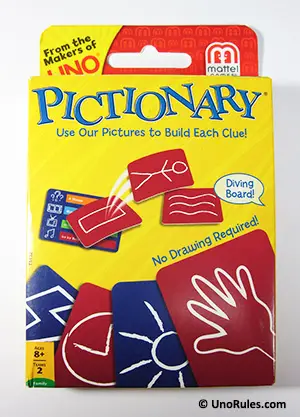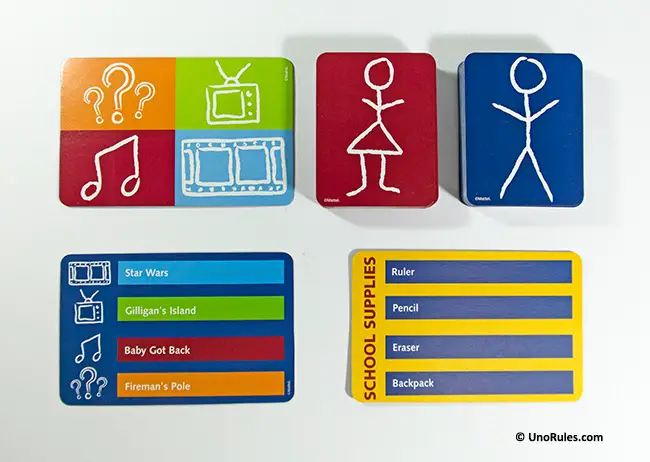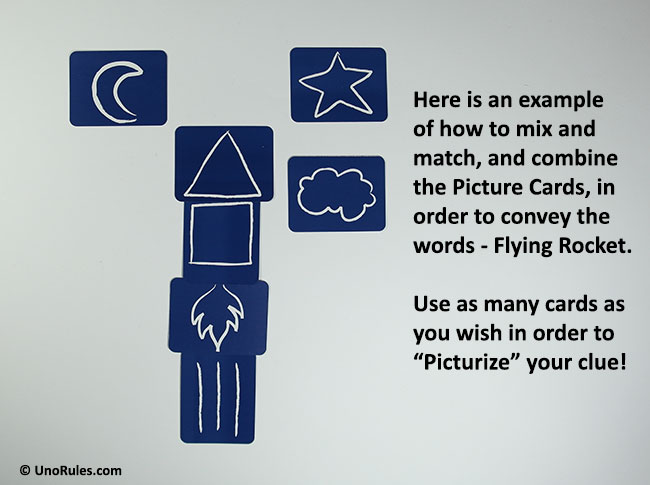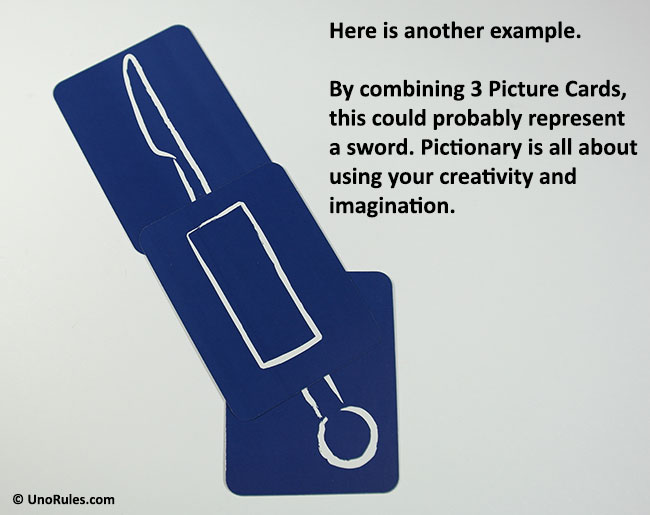 Pictionary is a card game version of charades, the well known game where players try to guess a specific word by means of an appointed actor acting out that word without actually saying it aloud.
Pictionary is a card game version of charades, the well known game where players try to guess a specific word by means of an appointed actor acting out that word without actually saying it aloud.
Originally, Pictionary was invented by a man named Robert Angel, and later on, the game was sold to Mattel who now markets and promotes the game. In the Mattel version of Pictionary, the answer can only be guessed at by using the provided Picture Cards to “sketch” the needed clues for the game participants (there is no real drawing involved).
Pictionary is played by two teams, and as such, must have a minimum of at least 4 players (an actor/Picturist and at least one player, per team). There are 88 Picture Cards (44 in blue and 44 in red), 66 Clue Cards (which are all random), and 2 Category Cards (a card for each team).
Clue Cards
Mattel has made the game simpler for children to understand and play, and have included a “Kids version” of the Clue Cards, printed on one side (the yellow side), while the “Adults version” is printed on the other side (the blue side). In the Kids version, the clues are grouped into just one theme which you can see as a big word running down the side of the card. Meanwhile, the adult clues are just represented by small icons next to the clues.
Picture Cards
The Picture Cards are what you need to use to convey the word that needs to be guessed, to your team. Of course, just like charades, you can act as well, but you will be mostly using the Picture Cards to get your message across to your teammates.
There are a lot of Picture Cards, so use as many as you wish, so long as it helps your teammates to guess the answer. The Picture Cards come in a variety of drawings of objects, but here’s the fun part – you can use them anyhow you like, such as combining them to make a new “sketch” of the word that needs to be guessed.
Category Reference Cards
The Category Reference Cards have the 4 Adult clue category icons printed on them, and should be handed to both the participating teams. The purpose of these reference cards is so that the Picturist can point to whatever category on the card that the current clue belongs to, in order to help his or her team guess the correct answer.

The cards in Pictionary. Top Row left to right: Category Reference Cards, Red Picture Cards, Blue Picture Cards. Bottom Row left to right: Adult side of a Clue Card, Kid’s side of a Clue Card. Note that the Adult clues are harder compared to the Kid clues.
Gameplay
For every clue, both teams compete to be the first to correctly guess the answer for the same drawn clue. To begin the game, place the Clue Card deck to the side of the playing area. If the players are adults, the Adult Clues (blue side) needs to face down. If the players are kids, the Kid Clues (the yellow side) needs to face down. The Picture Cards for both teams should be spread out in front of the teams for quick and easy access, and should all be visible.
The youngest Picturist can go first, and he/she can choose a number between 1 and 4, corresponding with the number of clues on each of the Clue Cards. Both of the Picturists can then look at the chosen clue that corresponds with their chosen number. Remember to keep silent, and only point to a category on the Category Reference Card so that the teammates have a basic idea to begin with.
For Kid clues, the rules are relaxed a bit, and the Picturists can read the category aloud to their teammates (from the big word printed on the side of the Kid clue cards). But remember, the Picturists must not at any time read/say aloud the clues; only the given category as shown on the Clue Card can be spoken aloud.
When both the Picturists are ready, they both say “Go” to begin the game, and then it is a race for both the teams to be the first to figure out the answer. The Picturists will now start assembling a “sketch” by using their team’s respective Picture Cards and also acting out the clue as best they can, while their teammates shout out the possible answers.
There is no limit to how the Picture Cards can be used, so the Picturists can use as little or as many of the Picture Cards as they desire, “sketching” as little or as many drawings as required to get the point across.


Winning the game
A point is scored by the team that is the first to guess the correct answer as shown on the Clue Card that was picked earlier. The first team to acquire 5 points is the game winner. However, this winning score is not a fixed number, and both teams can mutually decide on how many points to score in order to win the game.
How precise the answer needs to be should be decided upon before the game begins. For example, can an answer like “swim” be acceptable for “swimming”? For young children, it is recommended to relax the rules a bit. For example, children can be allowed to act out the clues as they wish, as long as they use at least one Picture Card.
If both teams are unable to guess the clue, the Picturists can mutually agree to pass and be replaced by two new Picturists who should then redo the drawing of a new Clue Card and choosing a fresh clue. The old Clue Card is placed back at the bottom of the deck.
Points to Remember
- Never act without using a Picture Card. This is the basic rule in Pictionary.
- Be as creative with the Picture Cards as you can. This means you can stack them, combine them, and also act with them. Now, how to act with the cards? Well, you can place them on your body (e.g. to show that it is related so a certain body part) or you can hold a card and pretend to do something with it (e.g. holding a card of a car in your hands and pretending to drive with it – to signify “driving”).
- Just like charades, homophones are important. Homophones are words that sound alike but have different spellings and meanings. For example, “plain” and “plane” or “three” and “tree”. Get your team to guess a homophone if the other word is too difficult.
- The “actors” or Picturists are not to make a sound at any time, but they must use basic hand gestures like pointing, touching, shaking your head, or nodding. Pinching your fingers to convey small in-between words like “the”, “an” and “of” is allowed.
- Do not point at your ear to convey “sounds like”.
- Do not use sign language or use dashes to let the team know how many words there are in the answer.